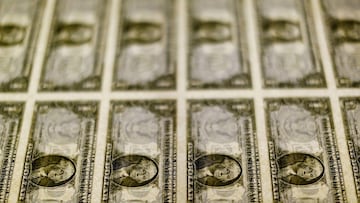How to know which are the 1 dollar bills that sell for $150,000: Do you have one and how many there are?
Thanks to a printing error, there are dollar bills that sell for up to $150.000. We explain how many there are and how to know if you have one.

In special cases and due to different reasons, there are copies of coins and bills that circulate that those that possess them can sell them for a fortune to collectors.
A little bit of extra money is never a bad thing for anyone and what better way to make a fortune for a single dollar, since North American collectors are willing to pay up to $150,000 for dollar bills due to a printing error made by the United States Bureau of Engraving and Printing in 2014.
How many $150,000 dollar bills are there?
According to information collected by TyC Sports, there are around 6.4 million dollar bills that were issued in duplicate with the same serial number. These are being sought after by thousands of collectors in the country.
The first batch of erroneous banknotes was distributed in 2014 in New York State and, interestingly, another batch of the same arrived in Washington two years after the first error.
$1 bills selling for $150,000: How do I know if I have one?
So far, only nine pairs of mistakenly duplicated dollar bills have been found, which means there are millions of these circulating across the country and probably around the world. .
To find out if your dollar bill is worth thousands of dollars, you should check the serial number of the bill, which should be between B00000001 and B00250000 or B03200001 and B09600000.
In addition to the serial number, you should make sure the bill has a Federal Reserve stamp with the letter “B”. Also, the serial number must end with a star.
This may interest you: These are quarters that could be worth up to $2,500: How do I know if I have one?
How is the value of a bill or coin determined?
According to the US First Exchange site, there are four types of value: list or catalog value, purchase price, retail value and wholesale value.
Related stories
The list value is the average price most dealers would sell an old coin or bill for. The purchase price is what a merchant would be willing to pay. The retail value is the price for which a specific dealer would be willing to sell you a coin or note. The wholesale value is the price that merchants use when trading with each other.
In the case of the value of a coin or bill, you are essentially determining the catalog value based on three main factors: the rarity, the condition/grade of the coin or bill, and market conditions, i.e., the demand. The combination of these three factors give the value of a coin or bill.

